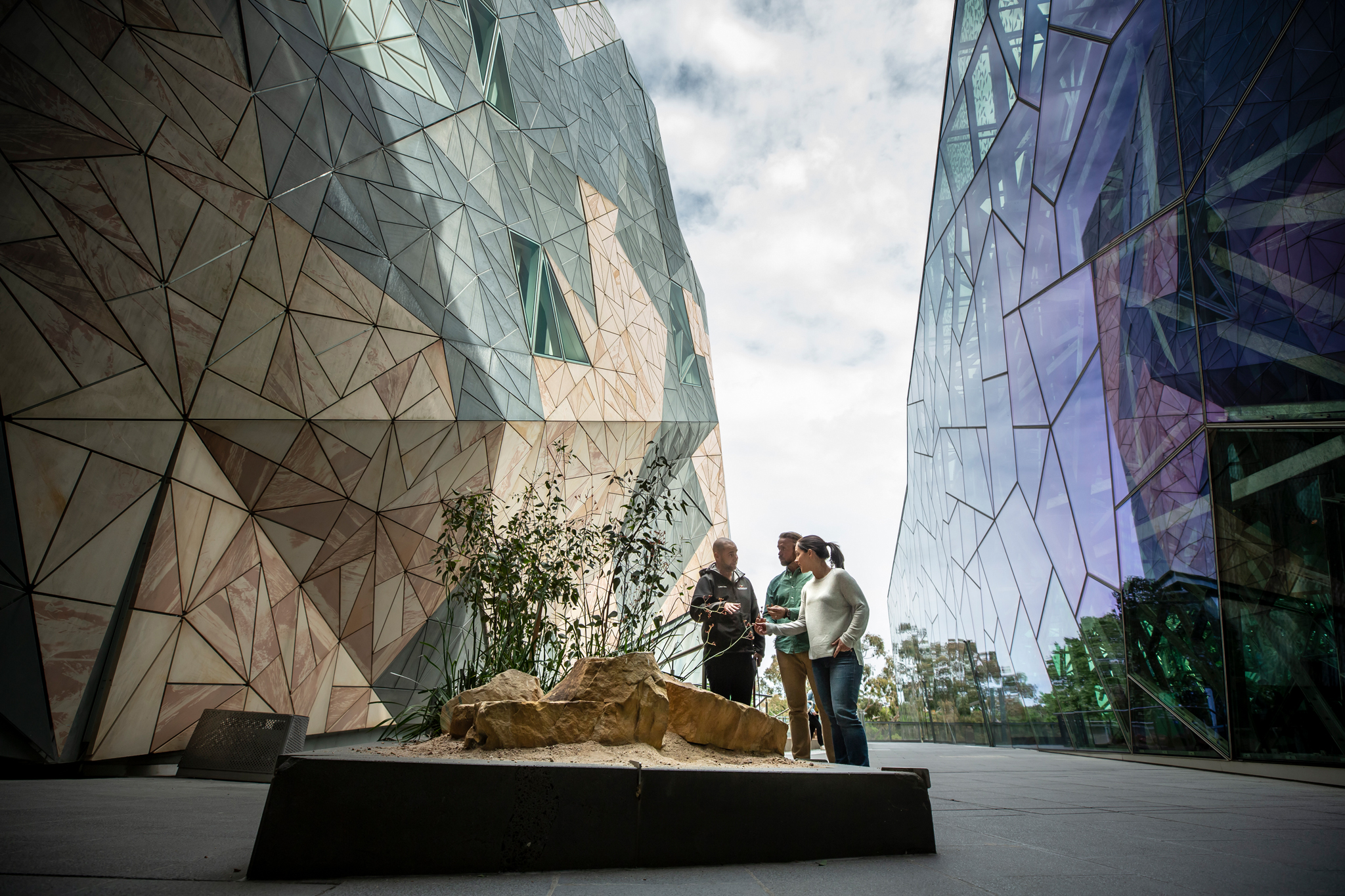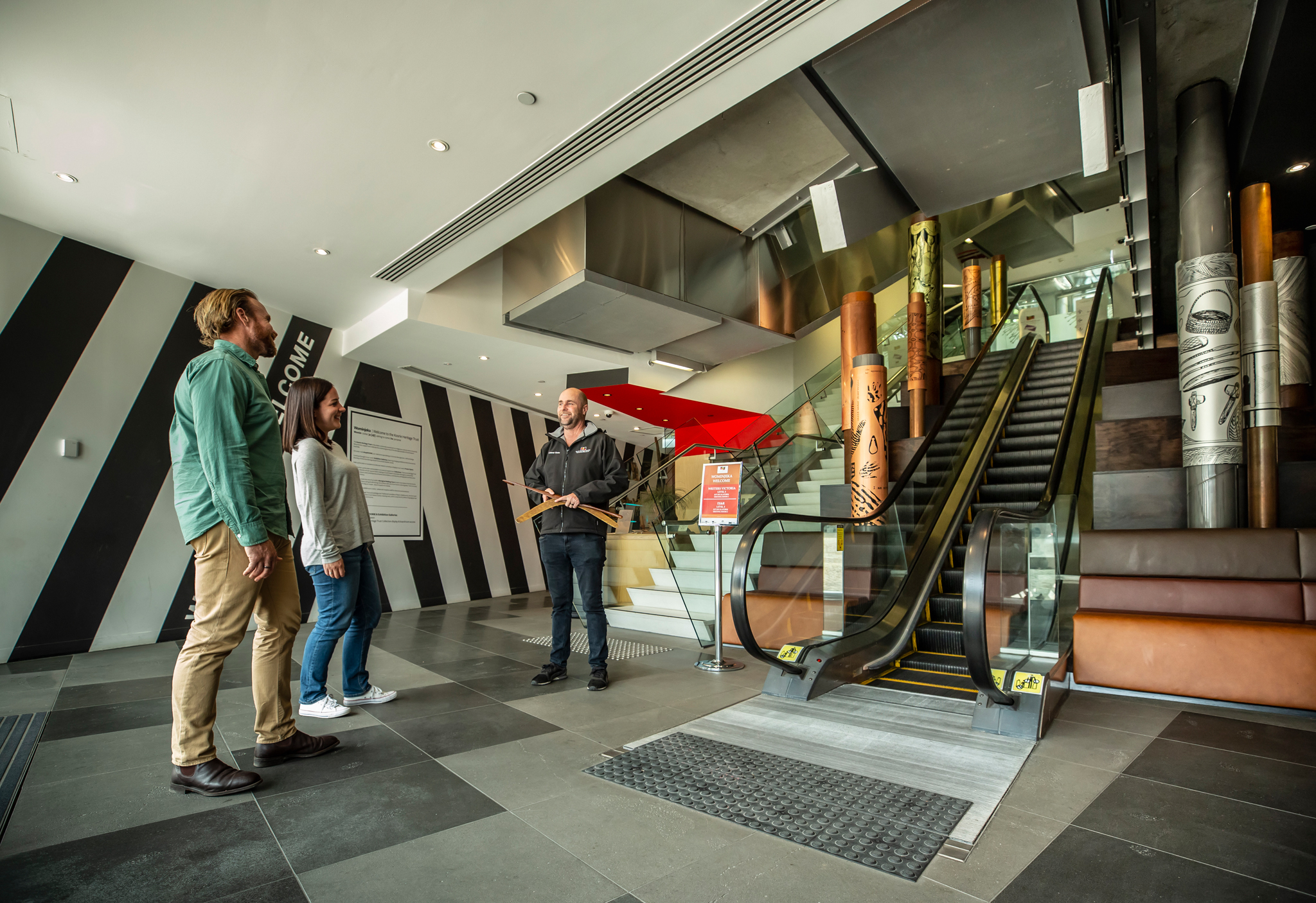Rob Hyatt — Koorie Heritage Trust
“A lot of visitors to the Koorie Heritage Trust have no idea what Aboriginal cultures look like in an urban setting,” says Rob Hyatt, the organisation’s cultural education manager.

Koorie Heritage Trust, Melbourne/Narrm, VIC © Visit Victoria
They enter the Aboriginal-operated trust’s architecturally dramatic gallery and cultural centre at Federation Square in the heart of Melbourne/Narrm, he says, and are “somewhat taken aback by what they discover.”
Giving Aboriginal peoples a voice
The trust began in 1985 at the Melbourne Museum as a way to “give Aboriginal peoples a voice on how artefacts are displayed, in a cultural rather than anthropological way,” Rob says. It has since become an independent not-for-profit, housing more than 6,000 items from pre-colonisation to today, and covering everything from photographs to oral stories told by Elders.
“It’s just one of the ways we’re able to show the diversity of Aboriginal cultures in both Victoria and Australia,” says Rob, who spends a lot of his time curating cultural competency workshops for government and corporate groups.
“We have this amazing opportunity to talk about our collective history and the impact of colonisation, and what that means today,” he adds. “It’s truth telling, but without any attached blame or guilt.”

Koorie Heritage Trust, Melbourne/Narrm, VIC © Visit Victoria
Making Aboriginal heritage tangible
Rob and his team also run tours around Melbourne/Narrm, revealing the city and its stories through Aboriginal eyes.
“Every tour is unique, because the guides tell their own stories – having an individual expression of culture is really important,” he says. “People get to see our heritage on display, including ‘scar trees’ and cultural sites. It makes our heritage feel tangible.”
“Visitors sometimes ask us, ‘Where are the real Aboriginal people?’ Our role is to educate that diversity is us – we’re all different because we all have individual cultures and experiences.”